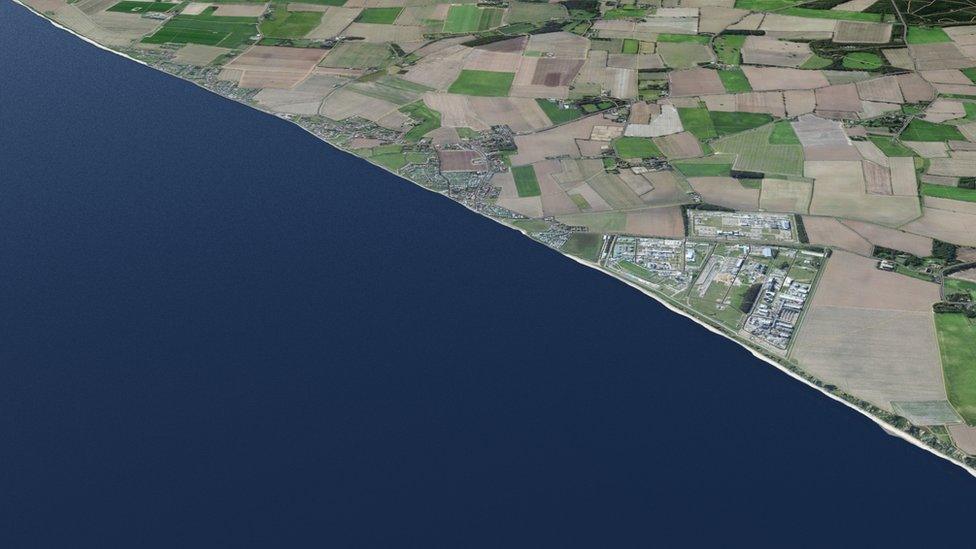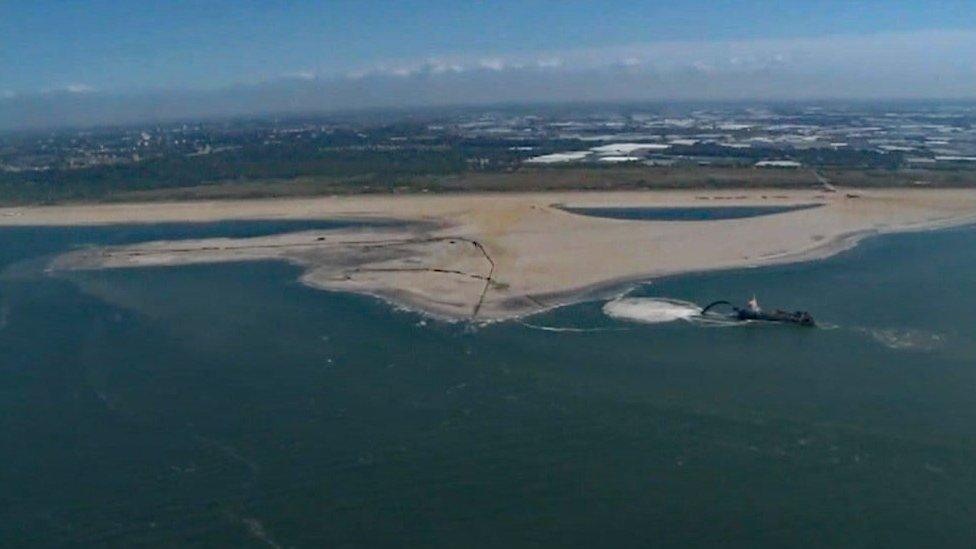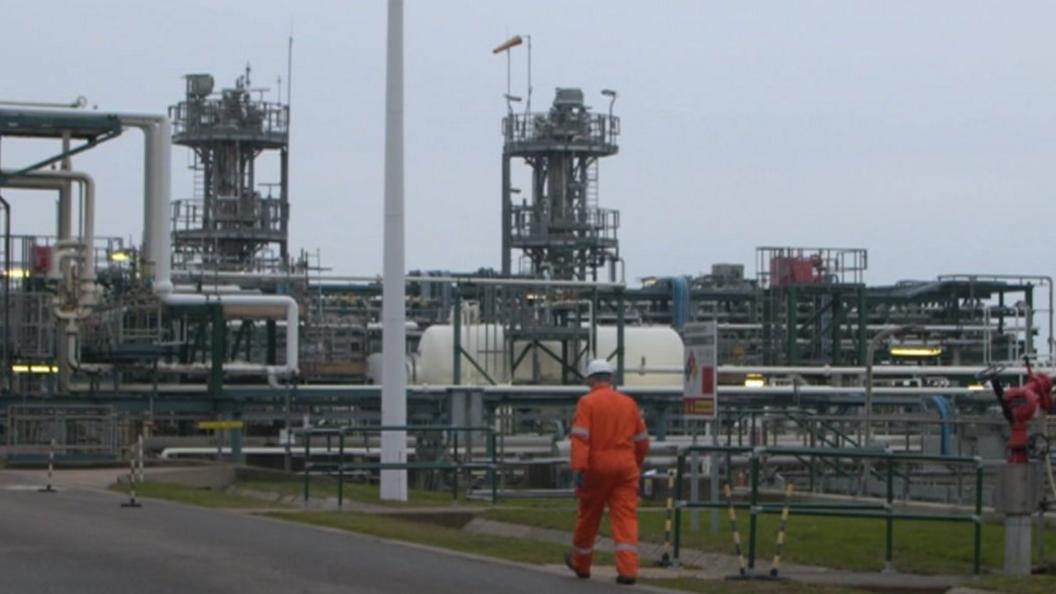Bacton Gas Terminal to be protected by sandscaping plan
- Published

This is how the coastline at Bacton and Walcott would look after sandscaping
A £22m "sandscaping" plan to protect a gas terminal from coastal erosion has been approved by planners.
The scheme would see a 3.5-mile (5.6km) stretch of north Norfolk protected by 1.8 million cubic metres of sand.
Sandscaping, as it is known, will defend the area from cliff erosion and reduce the risk of flooding by extending the size of the beach.
The "innovative" project, which could start next year, is the first to be carried out in the UK.

The coastline at Bacton and Walcott in its current state
Sarah Butikofer, leader of North Norfolk District Council, welcomed the decision of the Development Committee, external to grant planning permission.
She said the project was essential to protect the Bacton gas terminal, which handles one third of the UK's gas supplies, as well as the villages of Bacton and Walcott.
"It is an exciting project that will put north Norfolk on the map for leading the way in innovative technology solutions and tackling climate change on our doorstep," she said.

Similar sandscaping schemes have been used to protect low-lying coastal areas in The Netherlands
The £22m cost will be shared between North Norfolk District Council, the Bacton terminal operators, the Environment Agency and other local funding bodies.
Sandscaping, which is used widely in The Netherlands, involves building up the existing beach with sand dredged from the North Sea, allowing it to absorb the impact of waves more effectively.
Dutch engineering company Royal Haskoning DHV will design the Bacton scheme.

Dutch engineers are experienced in sandscaping techniques
About one million cubic metres of sand will be placed in front of the gas terminal and between 0.5 and 0.8 million cubic metres on the beach in front of Bacton and Walcott villages.
Several other steps need to be completed before the work can start, including appointing a construction contractor and obtaining a licence from the government's Marine Management Organisation.
It is hoped work can begin in the spring.
- Published22 November 2018

- Published24 July 2018
